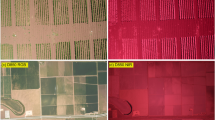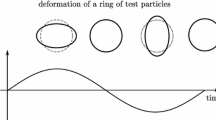Abstract
Laser rangefinder performance (i.e., maximum range) is strongly affected by environment due to visibility-dependent laser attenuation in the atmosphere and target reflectivity variations induced by surface condition changes (dry vs. wet). Both factors have their unique spectral features which means that rangefinders operating at different wavelengths are affected by specific environmental changes in a different way. Current state of the art TOF (time of flight) semiconductor laser rangefinders are based mainly on two wavelengths: 905 nm and 1550 nm, which results from atmospheric transmission windows and availability of high power pulsed sources. The paper discusses the scope of maximum range degradation of hypothetical 0.9 μm and 1.5 μm rangefinders due to selected water-related environmental effects. Atmospheric extinction spectra were adapted from Standard Atmosphere Model and reflectance fingerprints of various materials have been measured. It is not the aim of the paper to determine in general which wavelength is superior for laser range finding, since a number of criteria could be considered, but to verify their susceptibility to adverse environmental conditions.
Similar content being viewed by others
References
M.C. Amann, T. Bosch, M. Lescure, R. Myllyla, and M. Rioux, “Laser ranging: a critical review of usual techniques for distance measurement”, Opt. Eng. 40, 10–19 (2001).
H.N. Burns, C.G. Christodoulou, and G.D. Boreman, “System design of a pulsed laser rangefinder”, Opt. Eng. 30, 323–329 (1991).
C.J. Willers, Electro-Optical System Analysis. A Radiometry Perspective., SPIE Press, Bellingham, 2013.
M. Zygmunt, “Methods of sub-noise signals detection in time-of-flight laser rangefinders”, Ph.D. Dissertation, Military University of Technology, Warsaw, 2002.
R.D. Richmond and S.C. Cain, Direct-Detection LADAR Systems, SPIE Press, Bellingham, 2010.
H. Weichel, Laser Beam Propagation Through the Atmosphere, SPIE Press, Bellingham, 1990.
Y. Yang, Y. Zhao, Z. Yuan, Q. Lijie, L. Shigang, and N. Jingda, “Analysis of the Transmittance of laser atmospheric transmission”, Infrared and Laser Engineering 28, 15–20 (1999).
S.A. Twomey, C.F. Bohren, and J.L. Mergenthaler, “Reflectance and albedo differences between wet and dry surfaces”, Appl. Opt. 25, 431–437 (1986).
K.F. Palmer and D. Williams, “Optical properties of water in the near-infrared”, J. Opt. Soc. Am. 64, 1107–1110 (1974).
K. Chrzanowski, “Review of night vision technology”, Opt.-Electron. Rev. 21, 153–181 (2013).
Author information
Authors and Affiliations
Corresponding author
About this article
Cite this article
Wojtanowski, J., Zygmunt, M., Kaszczuk, M. et al. Comparison of 905 nm and 1550 nm semiconductor laser rangefinders’ performance deterioration due to adverse environmental conditions. Opto-Electron. Rev. 22, 183–190 (2014). https://doi.org/10.2478/s11772-014-0190-2
Published:
Issue Date:
DOI: https://doi.org/10.2478/s11772-014-0190-2




